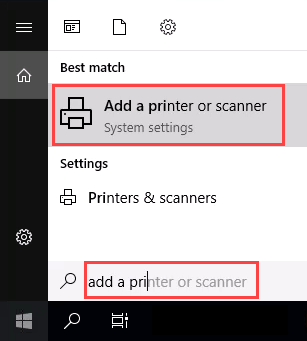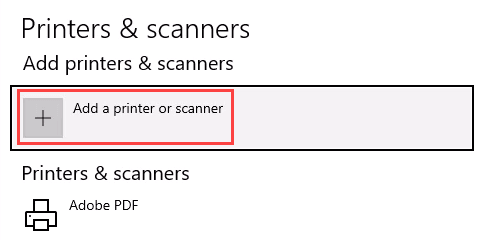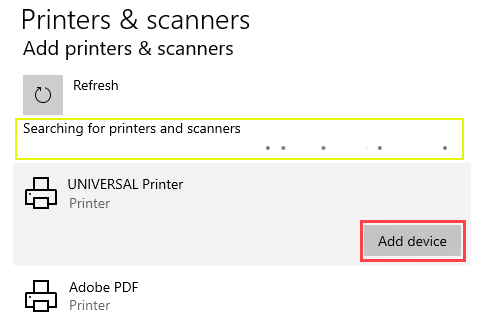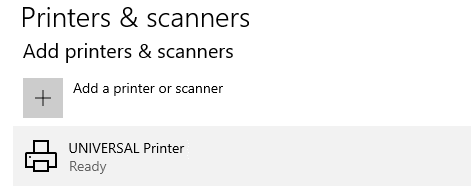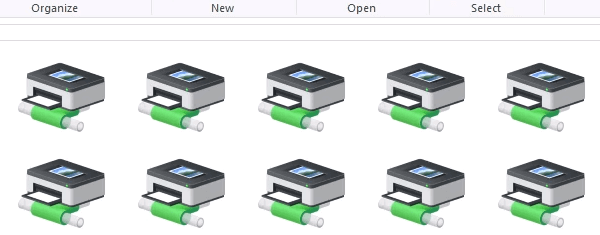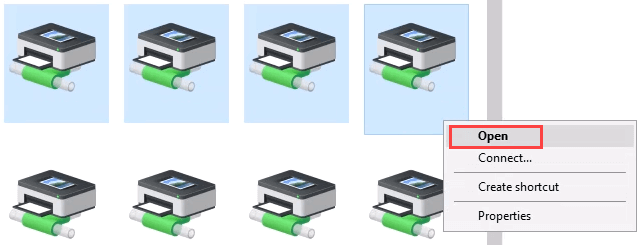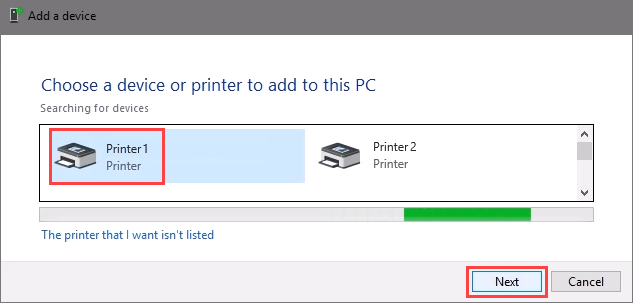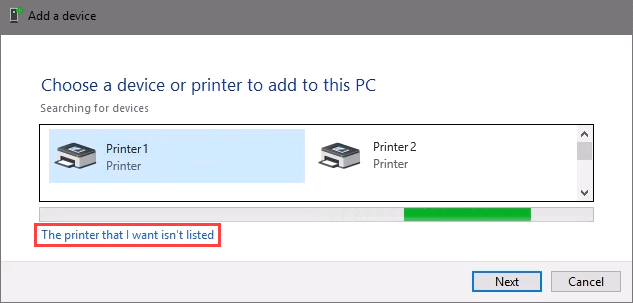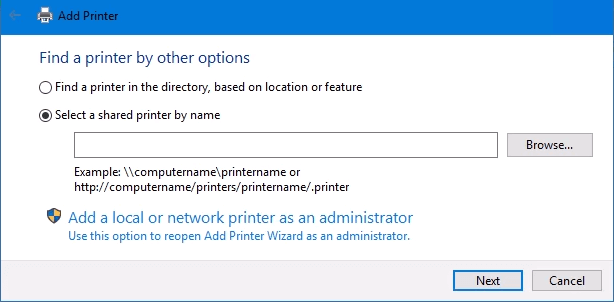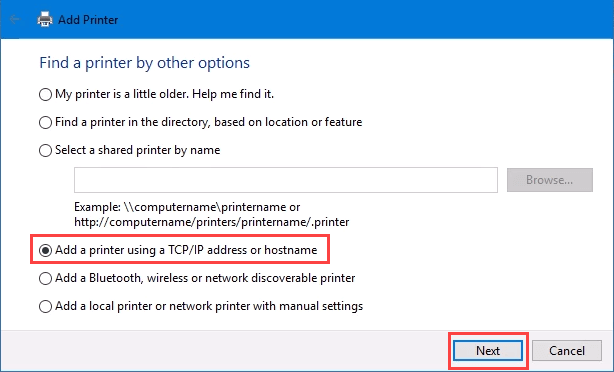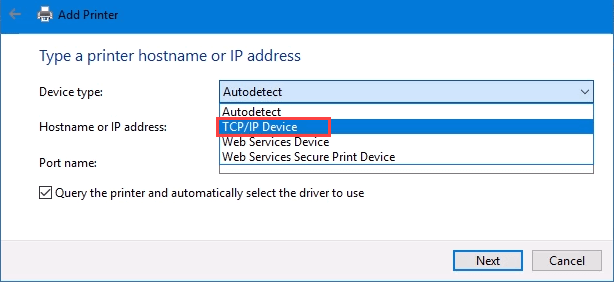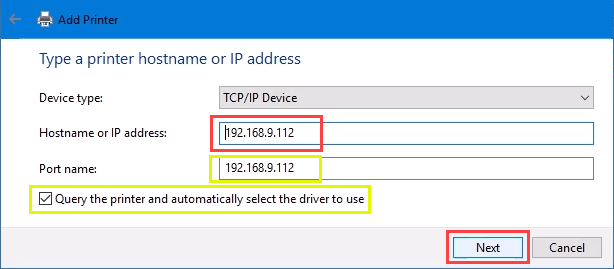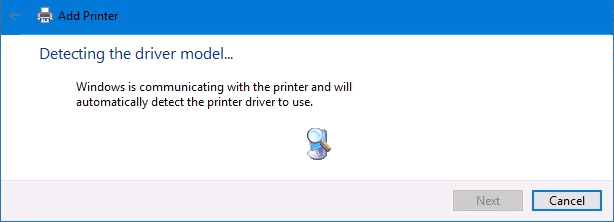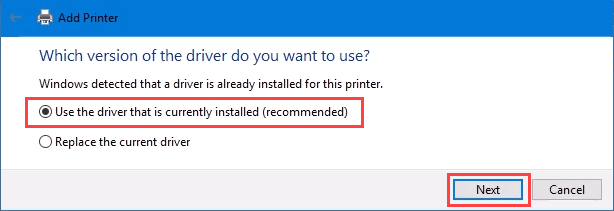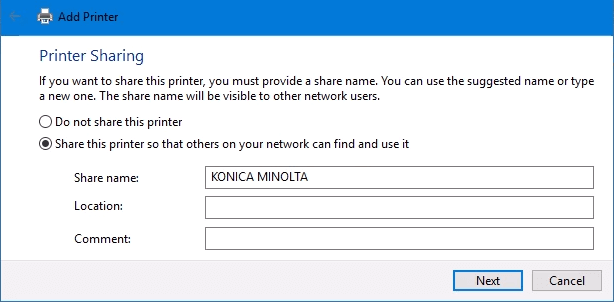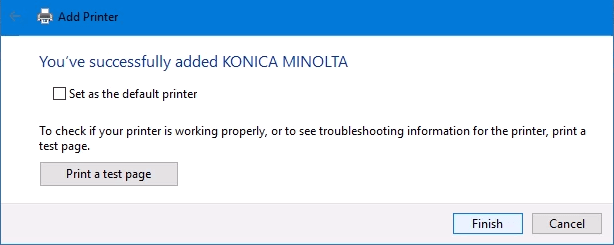Times change and so does Windows. If you’ve recently moved from a Windows Server 2012 and Windows 7 or 8 environments into Windows Server 2019 and Windows 10, things are a little different.
The old ways to connect to a network printer are still there. They may look a little different, too. So we’ll show you how to connect to a network printer in Windows 10 or Server 2019. Our favorite way is the last method.
Use Add Printers & Scanners
The new Windows Settings world works the same as in the Control Panel, but it looks different enough to cause confusion for some. Note that if this is at work and you’re not an administrator, the printer must be on the network and the driver already installed. If it’s not installed, you’ll get a prompt to enter the administrator account name and password.
- In the Start menu, type add printers. When the result Add a printer or scanner shows, select it.
- When the Printers & scanners window opens, select Add a printer or scanner. It will start searching for available printers.
- It may look like it’s still searching, even though all the printers available are showing. Find the printer needed, select it, and then the Add device button will show. Select it.
- The printer will install. There’ll be a progress bar and when it’s done, it’ll say Ready.
Connect to a Network Printer Through a Network Share
Here’s a way to install a printer that’s different from what you may be used to. It requires that the printer is shared and on the network. Unless you’re the administrator, the driver needs to be installed on your local machine or server. You need to know the path to the share as well. It will look something like Print-Server-Name, where Print-Server-name is the name of the server.
- Open File Explorer. In the location bar, enter the printer share path and then press the enter key. File Explorer will find the share.
All the shared printers will show.
- There are two options:
- Install a single printer
- Install several printers at one time
To install a single printer, double-click on it.
When the installation finishes, you’ll see the newly installed printer’s print queue window.
- To install several printers at once, select printers by clicking and dragging a rectangle around them, or hold down the Ctrl key while selecting printers individually. Either right-click and select Open or simply press the Enter key.
Connect to Network Printer via Control Panel
The good old control panel is still there. If you’ve used it before, you know what to do. If not, it’s almost the same as adding a printer through Settings.
- Open the Start menu and select Control Panel. If it’s not there, start typing control and it will show.
- Select Add a device in the Hardware category.
- Select Add a printer.
- It will show a selection of printers. Select the one needed and then select Next.
The printer will start installing. It may take a few seconds or minutes.
- Once the success window opens, there are options to Set as the default printer and Print a test page. Set the printer as default if needed. It’s always a good idea to print a test page. To exit, select Finish.
Connect to Network Printer via IP Address
The printer you want to install might not be easily visible, but if you have the IP address for it you can use that to connect with the printer. Administrator rights may be required. The first part is the same as adding a printer through the Control Panel until you get to the step to choose the printer. Let’s pick it up from there.
- At the Add a device window, select The printer that I want isn’t listed.
- If administrator rights are required, select Add a local or network printer as an administrator.
Otherwise, the window below will show. Select Add a printer using TCP/IP address or hostname then select Next.
- For Device type: there are several choices. Web Services Device and Web Services Secure Print Device are used for special cases. If you don’t know what those mean, you probably don’t need them. Autodetect may make the wrong choice as well. Select TCP/IP Device.
Enter the IP address in the Hostname or IP address: field. Notice how the Port name: field auto-populates with whatever is entered. The port name can be left as is or changed. In most cases, Query the printer and automatically select the driver to use remains checked.
Sometimes an organization will use a universal printer driver to keep things simpler and use less storage. It also keeps the registry small and login times faster. The HP Universal Print Driver works well for HP and many other printers. Select Next.
It detects the TCP/IP port to see if it exists.
Then it detects the driver model needed.
- Normally, Windows will find a driver already installed, offer the option to replace the driver, or ask to install a driver. If it’s on the network already, it probably installed the driver already. Select Use the driver that is currently installed and select Next.
- It will auto-select a name for the printer. That can change as needed. Select Next.
The real installation begins.
- If sharing the printer, add a location so others can see where the printer is located.
It successfully installed the printer. Set it as the default or not as needed. As always, it’s a good idea to Print a test page. Select Finish closes out the window.
Connect to a Network Printer via PowerShell
Finally, the last, and possibly best, way to connect network printers is with PowerShell. Why is this best? If you’re a System Administrator and have dozens of printers to connect, or if you need to make sure the printer is connected every time the server starts or someone logs in, a PowerShell script is best. It’s fast, done once, and easy to call many times.
You will need to know:
- Printer IP address
- Printer driver name
- What to name the printer
Following is a sample script. Make it into a looping script to install several printers at a time, or make it a function to call from other processes.
# check if a printer port exists
$portName = “TCPPort:192.168.8.101”
$portExist = Get-Printerport -Name $portName -ErrorAction SilentlyContinue
# if port doesn’t exist, add it
if (-not $portExists) {
Add-PrinterPort -name $portName -PrinterHostAddress “192.168.8.101”
}
# check for print driver
$driverName = “Brother MFC-7440N”
$driverExists = Get-PrinterDriver -name $driverName -ErrorAction SilentlyContinue
# add printer if driver exists or else throw an error
if ($driverExists) {
Add-Printer -Name “My Brother Printer” -PortName $portName -DriverName $driverName
} else {
Write-Warning “Driver not installed” -ForegroundColor Red
}
When the script is run, it takes maybe 3 seconds. Then you’ll see the printer installed.
Any Other Ways to Connect to a Network Printer?
We’ve given you several ways to connect to a network printer or several printers. One of them will be the best way for you. There is at least one other way, and that’s by the Command Prompt.
It works, but why mess with that when PowerShell is simpler and faster? We can deploy printers using a Group Policy Object. That’s beyond this article, though. Let us know what you think in the comments. Did we help you?
Related Posts
- Preparing for Windows 10 End of Support: Upgrading to Windows 11
- How to Fix a “This file does not have an app associated with it” Error on Windows
- How to Fix an Update Error 0x800705b4 on Windows
- How to Resolve “A JavaScript error occured in the main process” Error on Windows
- How to Fix the Network Discovery Is Turned Off Error on Windows

